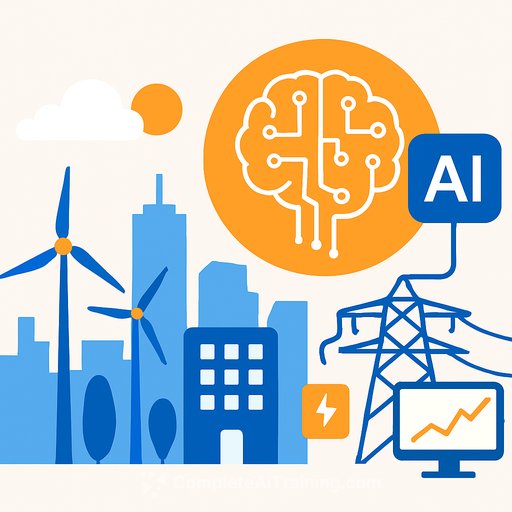City Power and Huawei: Deploying AI for Grid Management
Johannesburg's electricity distributor is scaling from a 2,000 MW load to more than 3,000 MW today, with demand projected to reach 5,000 MW by 2030. With 2,800+ employees and legacy infrastructure dating back to the city's early growth, City Power must do more with what it has.
Under the leadership of COO Charles Tloane, the team is deploying AI with Huawei to predict demand, prevent failures, and stretch capital budgets. The strategy is simple: diagnose risk early, act fast, and keep the city online.
Why AI, and why now
City Power can't replace every legacy asset overnight. AI fills the gap by providing visibility: where losses occur, what weather-driven load will look like, and which assets are most at risk.
The result is a management system that surfaces patterns buried in operational noise-enabling timely decisions without waiting for a fault to expose itself.
From reactive to predictive maintenance
Mini substations that once failed without warning are now monitored continuously. AI flags abnormal behavior so teams can intervene before customers feel the impact.
This reduces unplanned outages, limits equipment damage, and keeps maintenance spend focused on the highest-risk assets.
Managing peak demand in real time
When the system approaches capacity, City Power broadcasts targeted messages via social media and SMS asking customers to reduce usage. The response is visible in the load curve within minutes.
This demand response lowers the risk of outages and avoids paying for unserved energy-critical in a market where the distributor still pays the generator whether the energy is consumed or not.
Context: a stressed grid and constrained supply
City Power purchases electricity from Eskom, where generation constraints have driven load shedding in recent years. To buffer the city, City Power operates open cycle gas turbines (OCGTs), augments the network with microgrids, and integrates small-scale embedded generation from households and businesses.
These measures improve resilience, but they also create new coordination challenges-another area where AI forecasting and control add value.
Security: protecting critical infrastructure
The network spans underground tunnels and mountain pylon routes. Theft of aluminium cross members and steel structures causes failures and costly repairs.
City Power uses CCTV and armed response, but damage often occurs before teams arrive. AI-driven detection, prioritization, and patrol routing can compress response times and reduce losses.
Solar and storage shift the cost curve
Solar is accelerating. City Power has installed panels across its offices and now prioritizes solar for new electrification projects. Battery storage helps shave peak purchases from Eskom, improving both reliability and cost control.
For businesses and households, rooftop solar and storage create a path to sell excess energy back to the grid, pending tariff and metering structures.
Economics and regulation will decide the pace
Electricity prices in South Africa have increased more than 900% since 2007 while the economy grew around 1.5%. The pressure on affordability is real, and new tariff designs are in development.
Regulators such as NERSA will shape how distributed generation, storage, and AI-driven grid operations scale-supporting innovation while preventing abuse.
What managers can apply now
- Start with proof of concepts: validate AI models on high-failure assets and expand from there.
- Blend old and new: instrument legacy equipment with sensors and layer AI analytics on top.
- Create a demand-response playbook: automate alerts across SMS and social channels with clear, simple actions.
- Prioritize by risk: use predictive scores to schedule maintenance and allocate field crews.
- Tighten security: combine CCTV, AI detection, and rapid-response protocols to protect critical routes.
- Diversify supply: integrate OCGTs, microgrids, and rooftop solar with storage to flatten peaks.
- Model financial impact: quantify avoided outages, deferred capex, and energy purchase savings to fund scale-up.
The road ahead
City Power is working toward networks that self-diagnose and restore automatically. Tloane's vision is blunt: operate the grid from anywhere, with a system that heals itself before customers feel pain.
That future isn't distant. With AI insights, targeted communications, and a balanced energy mix, the building blocks are already in place.
Want to upskill your team on practical AI for operations and energy? Explore role-specific programs at Complete AI Training.
Your membership also unlocks:






